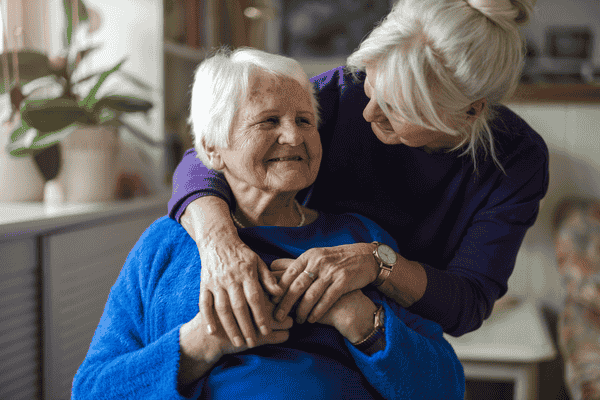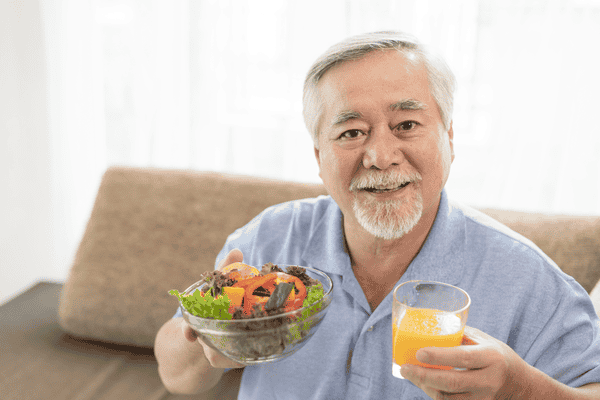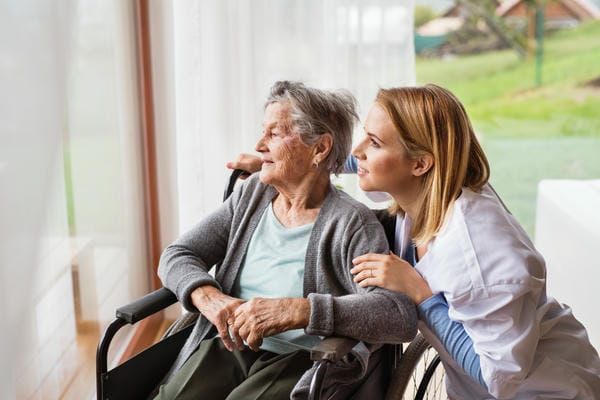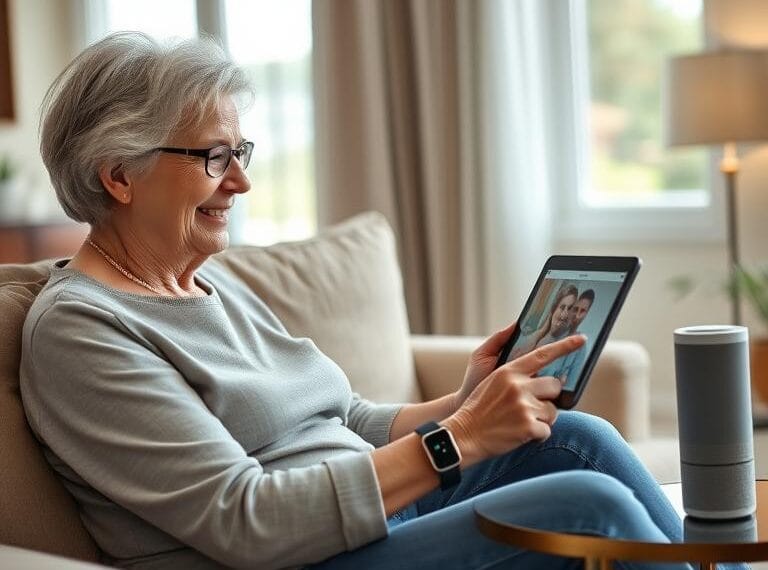In the tapestry of human experiences, few threads are as intricate and profound as the relationship between a caregiver and their care recipient. This bond, woven with strands of compassion, challenge, and deep emotional investment, often becomes the defining feature of both lives involved. Imagine stepping into the role of a caregiver for the first time – a journey that begins with a mix of trepidation and love, uncertainty shadowed by an unwavering sense of purpose. You find yourself suddenly responsible for the wellbeing of someone who may have once been your rock – a parent who raised you, a spouse who stood beside you through thick and thin, or a friend who has been a constant in your life’s narrative.
As you navigate this new chapter, the realization dawns that caregiving transcends the mere execution of tasks. It’s not just about administering medication, assisting with daily activities, or managing doctor’s appointments. At its core, caregiving is about forging and nurturing a connection – a bond that serves as a lifeline, offering comfort and empowerment to your care recipient while anchoring you in your newfound role. This relationship becomes the beating heart of the caregiving experience, its strength determined by the trust you build, the communications you foster, and the compassion you cultivate.
The First Step: Understanding the Care Recipient’s Needs
Let us delve into the story of Julia, a woman who found herself thrust into the role of caregiver for her mother, Eleanor. Eleanor had always been the embodiment of independence – a whirlwind of energy and determination who seemed unstoppable. That is, until a stroke left her partially paralyzed, transforming her world overnight. Julia, who had always seen her mother as an unshakeable pillar of strength, now faced the daunting task of becoming that pillar herself.
In the initial days, Julia felt overwhelmed by the sheer volume of responsibilities that now rested on her shoulders. From helping Eleanor with the most basic tasks like bathing and dressing to managing a complex medication regimen, every day presented new challenges. However, as the weeks turned into months, Julia began to realize that meeting her mother’s physical needs was only part of the equation – and perhaps not even the most crucial part.
Eleanor was grappling with a storm of emotions – frustration at her newfound limitations, grief for the independence she had lost, and fear of what the future might hold. Julia observed how her mother’s mood would darken when left alone for extended periods, or how disruptions to her routine would trigger anxiety. It became clear that addressing Eleanor’s emotional and social needs was just as vital as tending to her physical well-being.
This realization marked a turning point in Julia’s approach to caregiving. She began to shift her focus, making a conscious effort to engage her mother in meaningful ways. They would spend mornings looking through old photo albums, with Julia encouraging Eleanor to share stories from her past. These sessions became more than just a way to pass the time – they were an affirmation of Eleanor’s identity, a reminder that she was more than her current limitations.
Julia also started to involve Eleanor in simple household tasks, adapting them to her mother’s abilities. Whether it was folding laundry together or having Eleanor direct the arrangement of flowers in a vase, these activities gave Eleanor a sense of purpose and participation in daily life. Most importantly, Julia learned the value of simply being present – sitting with her mother in comfortable silence, offering a listening ear even when words failed, and providing a reassuring touch during moments of distress.
This shift in focus marked the beginning of a stronger, more nuanced caregiver-care recipient relationship. Julia discovered that by attuning herself to her mother’s needs – both spoken and unspoken – she could create an environment where Eleanor felt truly seen, valued, and supported. Caregiving evolved from a series of tasks to be completed into a shared journey, with moments of connection and understanding illuminating even the most challenging days.
Developing Essential Caregiver Skills
As Julia continued her caregiving journey, she came to understand that being an effective caregiver required a specific set of skills. These weren’t abilities she was born with, nor were they skills that materialized overnight. Instead, they were competencies that Julia had to consciously develop, hone, and refine through experience, reflection, and often, trial and error.
The Art of Communication
One of the first and most crucial lessons Julia learned was the paramount importance of effective communication. Eleanor, once known for her eloquence and quick wit, now struggled to articulate her thoughts and needs clearly. This change required Julia to become not just a listener, but an active interpreter of her mother’s verbal and non-verbal cues.
Julia learned to pay attention to the subtleties of her mother’s expressions, the tone of her voice, and even the silences between words. She discovered that sometimes, what Eleanor left unsaid was just as important as what she managed to express. This heightened awareness allowed Julia to respond not just to her mother’s spoken requests, but also to address the underlying emotions and needs that Eleanor might have been struggling to communicate.
Transparency became another cornerstone of their communication. Julia made it a point to explain her actions, whether she was administering medication, helping with physical therapy exercises, or making changes to Eleanor’s diet. This openness served a dual purpose – it helped Eleanor feel more in control of her care, and it built a foundation of trust between them. Even on days when Eleanor’s comprehension seemed limited, Julia maintained this practice, believing that on some level, her mother understood and appreciated being kept informed.
Empathy: The Bridge of Understanding
As Julia deepened her role as a caregiver, she discovered that empathy was not just a nice-to-have quality – it was an essential tool in her caregiving toolkit. She often found herself trying to see the world through her mother’s eyes. What must it feel like, she wondered, to have your body betray you, to rely on others for tasks you once performed without thought? This exercise in perspective-taking wasn’t always easy, but it was invaluable in shaping Julia’s approach to care.
This empathetic outlook manifested in countless small ways. When Eleanor became frustrated at her inability to button her own shirt, Julia didn’t rush to do it for her. Instead, she acknowledged her mother’s frustration, offered encouragement, and patiently waited as Eleanor tried again. When the task was finally completed, Julia celebrated this small victory with genuine enthusiasm, recognizing it as a significant achievement in Eleanor’s eyes.
Empathy also helped Julia navigate the emotional minefield of her mother’s mood swings. On days when Eleanor was particularly irritable or withdrawn, Julia reminded herself that these reactions weren’t personal attacks, but rather expressions of her mother’s internal struggles. This understanding allowed Julia to respond with compassion rather than defensiveness, de-escalating potential conflicts and maintaining a nurturing environment.
The Vigilant Observer
Caregiving turned Julia into a keen observer, always on the alert for subtle changes in her mother’s condition. She learned to notice the small shifts – a slight wince that might indicate pain, a change in appetite that could signal an oncoming illness, or a new difficulty with a familiar task that might suggest a decline in function. This vigilance allowed Julia to address issues proactively, often preventing minor concerns from escalating into major problems.
However, Julia also realized that this constant state of alertness could be exhausting. She had to find a balance between being attentive and allowing herself moments of relaxation. Julia learned to trust her instincts, knowing that she had developed a deep understanding of her mother’s baseline state and could recognize significant deviations when they occurred.
Patience: The Caregiver’s Virtue
If empathy was the bridge of understanding in Julia’s caregiving journey, patience was the sturdy foundation upon which that bridge was built. There were days when Eleanor’s progress seemed agonizingly slow, or when setbacks erased weeks of hard-won gains. Julia had to learn to measure success not in leaps and bounds, but in small, often imperceptible steps forward.
Patience also came into play in the day-to-day interactions between Julia and her mother. Tasks that Julia could accomplish quickly on her own often took much longer when she involved Eleanor. However, Julia recognized that this involvement was crucial for her mother’s sense of autonomy and self-worth. She learned to slow down, to match her pace to Eleanor’s, and to find value in the process as much as in the outcome.
This patience extended to emotional matters as well. There were days when Eleanor was frustrated, angry, or despondent, lashing out at Julia or withdrawing into herself. In these moments, Julia drew on her reserves of patience, reminding herself that these reactions were part of Eleanor’s process of coping with her new reality. Instead of meeting anger with anger or withdrawal with frustration, Julia learned to respond with calm understanding, providing a steady presence until the storm passed.
The Physical and Emotional Stamina of Caregiving
As the days turned into weeks and months, Julia became acutely aware of the physical demands of caregiving. The constant lifting, transferring, and assisting took a toll on her body. She realized that taking care of her own physical health wasn’t a luxury – it was a necessity if she wanted to continue providing the best care for her mother.
Julia began incorporating exercises into her routine to build strength and stamina. She learned proper lifting techniques to protect her back and practiced stretches to alleviate the tension that built up in her muscles throughout the day. These physical preparations not only made the tasks of caregiving easier but also gave Julia more confidence in her ability to safely assist her mother.
Equally important was the need to build emotional stamina. The role of a caregiver can be emotionally draining, with highs and lows that can feel like a roller coaster ride. Julia learned the importance of self-care, carving out time for activities that replenished her emotional reserves. Whether it was a quiet hour with a book, a walk in nature, or a phone call with a friend, these moments of self-care allowed Julia to return to her caregiving duties with renewed energy and patience.
Supporting Family Caregivers: A Community Effort
As dedicated as Julia was to caring for her mother, she soon realized that she couldn’t – and shouldn’t – do it all alone. The physical and emotional demands of full-time caregiving were immense, and Julia found herself teetering on the edge of burnout. It was at this critical juncture that she discovered the importance of community support and the wealth of resources available to family caregivers.
Julia’s first step was joining a local support group for caregivers. Initially hesitant, she found herself drawn into a community of individuals who truly understood her struggles, fears, and small triumphs. These meetings became a safe space where she could share her experiences without fear of judgment, seek advice from those who had walked similar paths, and sometimes, simply find comfort in the knowledge that she wasn’t alone in her journey.
The support group also opened Julia’s eyes to the range of services available to caregivers. She learned about respite care options, which allowed her to take short breaks from her caregiving duties. These breaks, though initially accompanied by feelings of guilt, proved invaluable in preventing burnout and allowing Julia to return to her role with renewed energy and perspective.
Furthermore, Julia took advantage of caregiver training programs offered by local healthcare organizations. These sessions provided her with practical skills – from safe lifting techniques to managing medication schedules – as well as insights into the medical aspects of her mother’s condition. Armed with this knowledge, Julia felt more confident in her caregiving abilities and better equipped to advocate for her mother’s needs in medical settings.
The Role of Professional In-Home Care Services
As Eleanor’s needs evolved, Julia recognized the need for additional support. This realization led her to explore professional in-home care services, a decision that would significantly impact both her and her mother’s quality of life.
The introduction of professional caregivers into their home was initially met with apprehension. Eleanor was resistant to the idea of “strangers” being involved in her care, while Julia grappled with feelings of inadequacy, wondering if seeking help meant she was somehow failing in her role. However, these concerns quickly dissipated as they experienced the benefits of professional support.
The in-home care team worked closely with Julia to develop a customized care plan that addressed Eleanor’s specific needs while respecting her preferences and routines. This collaborative approach allowed Julia to remain deeply involved in her mother’s care while receiving much-needed support in the more demanding physical aspects of caregiving.
Moreover, the professional caregivers brought a wealth of experience and specialized skills that complemented Julia’s efforts. Their expertise in managing Eleanor’s medical needs gave Julia peace of mind, knowing that her mother was receiving the highest standard of care. This support allowed Julia to shift some of her focus from the day-to-day tasks of caregiving to nurturing her emotional connection with her mother.
The in-home care services also played a crucial role in expanding Eleanor’s world. The team helped connect them with community-based services and activities tailored for seniors, addressing the social isolation that often accompanies limited mobility. Whether it was arranging transportation to a senior center or facilitating participation in virtual social groups, these efforts significantly boosted Eleanor’s mood and overall well-being.
Fostering a Strong Caregiver-Care Recipient Relationship
Through her journey, Julia came to understand that the heart of effective caregiving lay in the strength of the relationship between caregiver and care recipient. This bond, built on trust, open communication, and mutual respect, became the foundation upon which all other aspects of care rested.
Trust was cultivated through consistency and reliability. Julia made sure that her words always aligned with her actions, that promises made were promises kept. Even on the most challenging days, she strived to be a steady, dependable presence in her mother’s life. This consistency provided Eleanor with a sense of security in a world that often felt unpredictable and beyond her control.
Communication remained a cornerstone of their relationship. Julia made it a point to involve Eleanor in decisions about her care whenever possible, respecting her mother’s autonomy and right to have a say in matters that affected her life. Even when Eleanor’s ability to participate in decision-making was limited, Julia continued to explain her actions and choices, believing that this transparency was crucial to maintaining her mother’s dignity.
Perhaps most importantly, Julia approached her role with an abundance of compassion. She recognized that behind her mother’s occasional irritability or resistance was a person struggling to come to terms with profound changes in her life. This understanding allowed Julia to respond with patience and kindness, even in moments of frustration.
The relationship that developed between Julia and Eleanor transcended the traditional boundaries of caregiver and care recipient. It became a partnership, with both women adapting to their new roles and finding ways to support each other. Julia discovered that even as she provided care for her mother, she was receiving profound life lessons in return – lessons in resilience, in finding joy in small moments, and in the enduring power of love.
Conclusion: A Journey of Love and Growth
As Julia reflected on her caregiving journey, she realized that it had been a transformative experience for both her and her mother. What had begun as a daunting responsibility had evolved into a profound opportunity for connection, growth, and mutual understanding.
The challenges had been numerous – physical exhaustion, emotional strain, moments of doubt and frustration. Yet, interwoven with these difficulties were countless moments of joy, tenderness, and deep connection. Julia found that caregiving had opened her heart in ways she never expected, deepening her capacity for empathy and patience.
For Eleanor, the journey had been one of adapting to a new reality while rediscovering her sense of self-worth and purpose. Through Julia’s care and the support of their extended network, she had found new ways to engage with the world and express herself, even within the limitations imposed by her condition.
Their story serves as a testament to the transformative power of compassionate caregiving. It reminds us that at its core, caregiving is not just about managing physical needs – it’s about nurturing the human spirit, preserving dignity, and celebrating the enduring bonds of love and family.
For those embarking on their own caregiving journeys, Julia and Eleanor’s experience offers valuable insights. It underscores the importance of building a strong emotional foundation, seeking support when needed, and approaching the role with an open heart and mind. While the path of a caregiver is rarely easy, it has the potential to be deeply rewarding, offering opportunities for personal growth and the forging of unbreakable bonds.
In the end, Julia discovered that caregiving, with all its challenges and rewards, is a profound expression of love – a journey that transforms both the giver and receiver of care in beautiful and unexpected ways.






I found your blog site on google and check just a few of your early posts. Continue to maintain up the very good operate. I simply additional up your RSS feed to my MSN News Reader. Seeking forward to studying more from you in a while!…
Great post and right to the point. I don’t know if this is really the best place to ask but do you guys have any ideea where to hire some professional writers? Thanks in advance 🙂
Enjoyed reading through this, very good stuff, regards.
Thanks for one’s marvelous posting! I truly enjoyed reading it, you can be a great author.I will make sure to bookmark your blog and will come back at some point. I want to encourage you to ultimately continue your great job, have a nice weekend!
I’ve read some good stuff here. Certainly worth bookmarking for revisiting. I wonder how much effort you put to make such a great informative website.
Whats up very cool site!! Man .. Excellent .. Wonderful .. I’ll bookmark your website and take the feeds also…I am satisfied to seek out a lot of helpful information here in the submit, we’d like develop more techniques in this regard, thanks for sharing. . . . . .
I was suggested this web site by my cousin. I’m not sure whether this post is written by him as nobody else know such detailed about my trouble. You are amazing! Thanks!
I view something truly interesting about your web site so I saved to fav.
Your place is valueble for me. Thanks!…
I¦ve learn a few good stuff here. Certainly worth bookmarking for revisiting. I wonder how a lot effort you put to create this sort of great informative website.
Wonderful blog! I found it while browsing on Yahoo News. Do you have any suggestions on how to get listed in Yahoo News? I’ve been trying for a while but I never seem to get there! Thanks